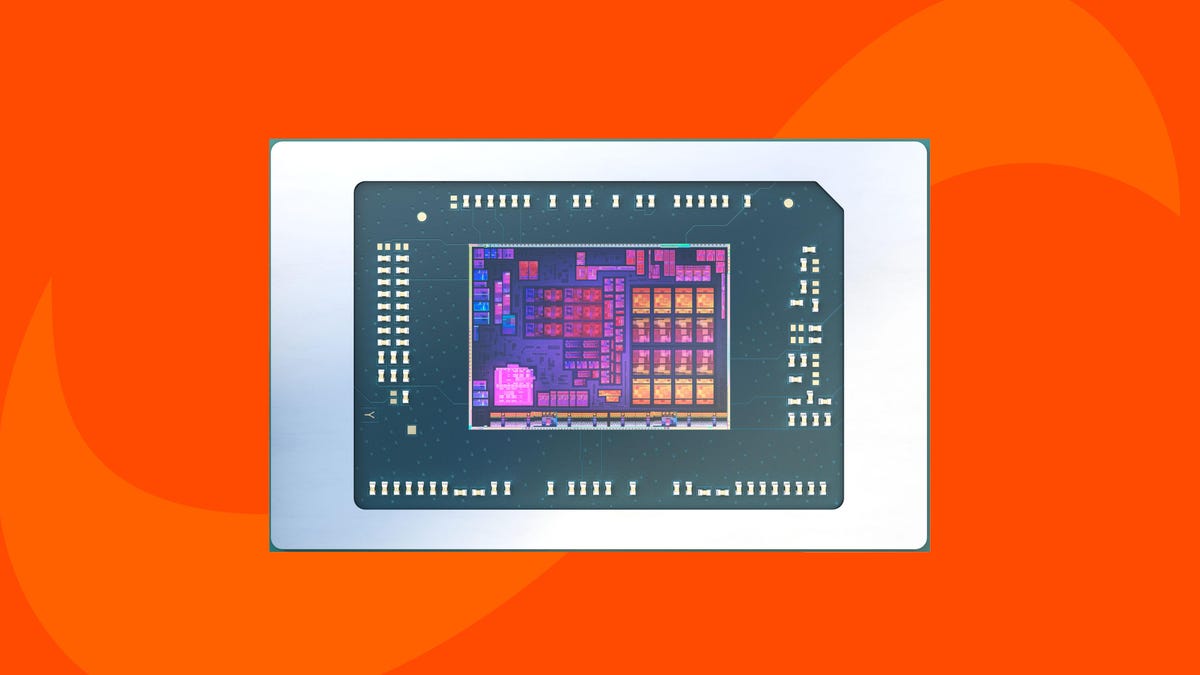AMD launched its high-profile, newest-generation Ryzen 8000-series mobile CPUs less than a month ago, saving the more mainstream (read “less expensive”), meat-and-potatoes announcements for CES. As usual, that means a step-up-from-entry-priced graphics chip, the Radeon RX 7600 XT, for cards starting at about $329, and a new slate of low-power Ryzen desktop CPUs, made up of new 8000 series chips and additions to the old 5000 series.
The $269 Radeon RX 7600 remains at the bottom of AMD’s current-generation pecking order, now joined by the XT version. As is common — Nvidia frequently does the same — they use the same GPU, but AMD kind of unbottlenecks it. That means more memory (16GB vs. 8GB) and higher frequencies, with a concomitant increase in power requirements (25 watts more) to drive it all. That means the XT is bigger and takes two 8 pin power connections rather than one.
Radeon RX 7600 XT
| Memory | 16GB GDDR6 |
|---|---|
| GPU clock (GHz, game/boost) | 2.47/2.76 |
| Memory data rate/Interface | 18Gbps/128 bits |
| Ray accelerators | 32 |
| Stream processors | 2,048 |
| Compute Units | 32 |
| AI accelerators | 64 |
| Process | 6nm |
| Total board power (watts) | 190 |
| Bus | PCIe 4.0×8 |
| Size | 2 slots |
| Launch price | Starts at $329 |
| Ship date | January 24, 2024 |
In practice, the XT probably won’t bump you up a resolution class — in other words, it won’t really get you from 1080p to 1440p gaming without sacrifices. But it could conceivably lift you a quality class at the same frame rate, give you a little more headroom for video editing and viewing large 3D models, or give some generative AI calculations a little boost. Those are the types of things that benefit from the extra memory and the slight speed uptick. The larger size and needier power may disqualify it from fitting into your system as a replacement, depending upon how small it is.
AMD won’t offer its own card with the GPU; it will only be available from the company’s typical partners including Acer, PowerColor, Sapphire, XFX and others. It’s expected to ship on Jan. 24.
Along with the card, AMD announced some updates to its Adrenalin software, including video upscaling and improvements in streaming video quality.

On the other side of the processing fence, new Ryzen CPUs are on their way. They’re predominantly 65-watt CPUs, lower power for desktops but a power class formerly used for high-power laptops. Now they’re commonly used for entry-level gaming as well as small-form and general-purpose desktop PCs.
The 8000 series incorporates the new technologies that debuted in December, notably more-powerful Radeon 700-series integrated graphics (the “M” designation is for mobile) and generationally improved AI processing with AMD’s XDNA neural processing.
Mainstream Ryzen desktop CPU specs
| Max boost (GHz) | Cores | Threads | NPU | Power class | Integrated graphics | Generation (socket) | |
|---|---|---|---|---|---|---|---|
| Ryzen 7 8700G | 5.1 | 8 | 16 | Yes | 65W | Radeon 780M | Zen 4 (AM5) |
| Ryzen 5 8600G | 5.0 | 6 | 12 | Yes | 65W | Radeon 760M | Zen 4 (AM5) |
| Ryzen 5 8500G | 5.0 | 6 | 12 | Yes | 65W | Radeon 740M | Zen 4 (AM5) |
| Ryzen 3 8300G | 4.9 | 4 | 8 | Yes | 65W | Radeon 740M | Zen 4 (AM5) |
| Ryzen 7 5700X3D | 4.1 | 8 | 16 | No | 105W | None | Zen 3 (AM4) |
| Ryzen 7 5700 | 4.6 | 8 | 16 | No | 65W | None | Zen 3 (AM4) |
| Ryzen 5 5600GT | 4.6 | 6 | 12 | No | 65W | Radeon Graphics | Zen 3 (AM4) |
| Ryzen 5 5500GT | 4.4 | 6 | 12 | No | 65W | Radeon Graphics | Zen 3 (AM4) |
The 8000 series requires AMD’s newest-generation AM5 socket, which makes it suboptimal for DIY upgraders, who probably have older motherboards, or buyers on a really tight budget. Because of this, AMD has also expanded its last-gen 5000 series with new CPUs that can fit into the older AM4 socket, but they have inferior integrated graphics and lack any sort of dedicated AI acceleration.
Most notable among them is the Ryzen 7 5700X3D, which uses AMD’s stacked-chip design (denoted by “X3D”) for faster-than-usual performance; it’s typically for gaming PCs with standalone graphics cards in them, and in this case, for midpriced systems.
Previously, the company’s AMD Advantage badging program denoted systems that maxed out all the AMD components and features possible and were designed in conjunction with AMD to do so. Now, those are being bumped up to a new AMD Advantage Premium slot, and poor, generic AMD Advantage will be used to denote more hands-off relationships — AMD “verified” without “rigorous qualification.”
This opens up marketing subsidies for custom builders and more prebuilt systems or laptops that don’t merit the co-development — companies such as Maingear, CLX, ABS and CyberPower PC — and existing partners including HP and Asus. Like Intel’s Evo badging, it rarely impacts your buying decisions in a meaningful way.
